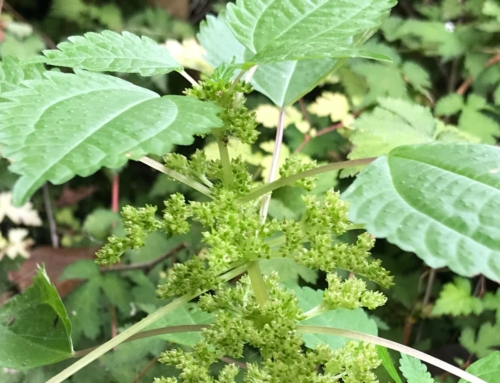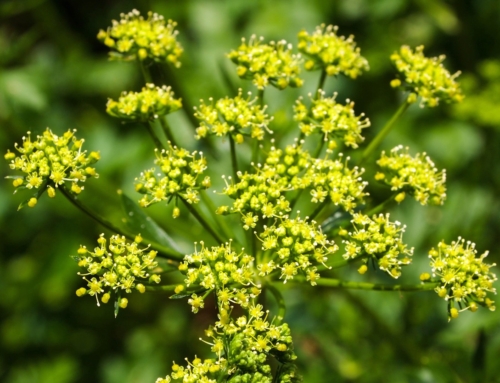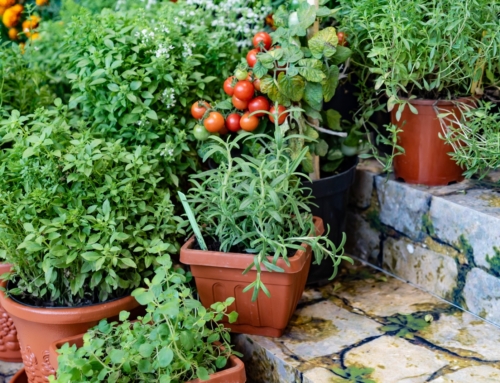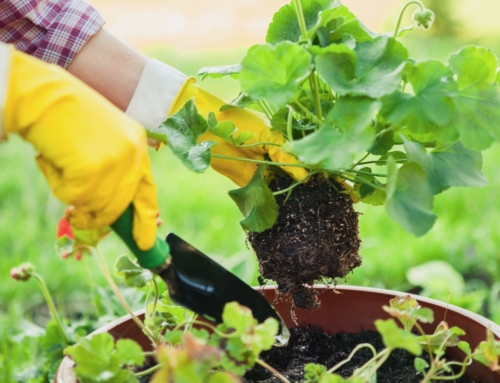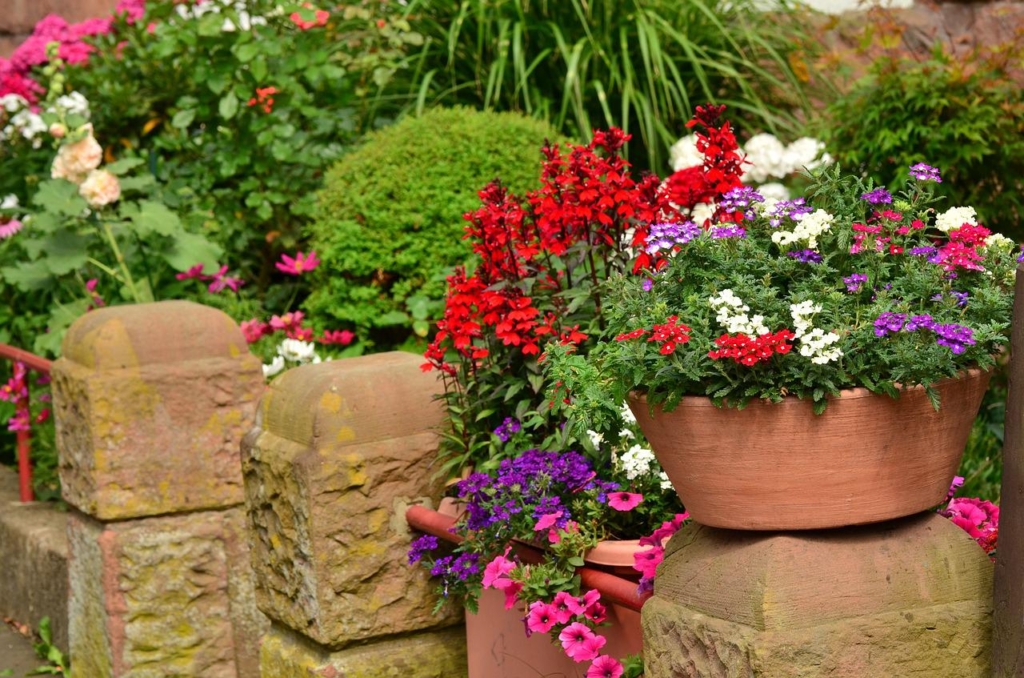
You have created a “bouquet with roots”. It may be edible, it may bear fruit, it may be snipped or picked periodically to make tea, spaghetti sauce, or caprese salad. We want our beautiful masterpiece to last. Thankfully, the maintenance of your container garden is not all that hard. Here are some helpful tips:
Groom your container gardens regularly.
Once a week (or so) pinch or snip off fading flowers, damaged leaves, and lanky stems, or tiny sections of plants outgrowing their space. If one plant is becoming too dominant, crowding out its pot mates, prune out some of the largest leaves or most vigorous stems so that the smaller ones can fill in. Grooming can also be used to train plants or manage their growth. Try to do some grooming each time you walk by the plant. It will look beautiful with just a little TLC.
Drainage is super important. Most plants don’t like their feet wet! If your container does not have feet, lifting it off the flat surface, raise the base of the pot an inch or so above the saucer, deck, or paving in order to prevent the drainage holes from becoming blocked. Plant trays can work well.
Light and temperature are the two key environmental factors to a successful container garden. As temperature and light conditions change in one location, don’t hesitate to move your container to another location. If moving the container is not an option, consider changing out plants to ones that are better suited to the conditions.
Protect your container gardens from wind gusts that may blow them over. Start by making sure the combined weight of the container and growing media is proportional to the height of the plants it holds. If wind is a problem, consider relocating the container to a safer place.
Heat absorption goes along with light – dark containers attract light, creating more heat on the plants. They can also dry out more quickly damaging roots. Consider dark containers for shady places or cover the dark container with spillers (training plants). Consider saving dark containers for plants that love the heat and dry conditions – like succulents!
Container gardens are not without their fair share of pests and diseases. But you can protect your plants with some simple steps. Growing plants in the with lots of air circulation is a great way to avoid fungal diseases. Making sure growing media drains well and not letting plants sit in water avoids molds. Keep an eye out for insect predators. Plain water from a hose can wash many of them right off the plant, if spotted early. And, of course, remove any diseased plant parts as soon as you see them.
Water, water, water!
While there are no hard and fast rules when it comes to watering, observing your plants regularly is the best way to maintain moisture. FEEL THE SOIL. If the first inch is dry, water. Apply enough water so that the whole root ball is moistened. Water deeply. This means using enough water so that you can see it come through the drainage holes. Lastly, avoid overhead watering, water at the soil level to keep leaves dry and help prevent fungal problems. If your soil never seems to dry out check to make sure roots are not blocking the drain hole.
Feed your plants.
Fertilize regularly according to the recommendations for the plant. This is the simplest means to achieve the maximum performance and appearance of your container garden. Frequent watering will naturally leach vital nutrients from the soil. Slow-release fertilizer are easy to use and they allow for the plant to be “automatically” fertilized each time it’s watered. Liquid fertilizers need to be carefully measured, applied when the media is moist (rather than dry) and should be applied around every two weeks, or according to the recommended schedule for the individual plants. The choice of fertilizers depends upon the kind of plants in the container. Be sure to read the directions – for the fertilizers and the plants! More about fertilizing annuals.
Keep a watchful eye on your container garden. When something isn’t going right, plants will let you know. They might wilt, take on a lackluster appearance, not grow as they should be, or simply underperform. Respond to their hints and they will respond to you!
Whew! Container gardening can be so fun with very little work. Yes, you might get your hands dirty in the process, but with a watchful eye and a little TLC, you will be richly rewarded for your efforts.
More Yard and Garden page resources
By Liza Cameron, Hennepin County Master Gardener volunteer
